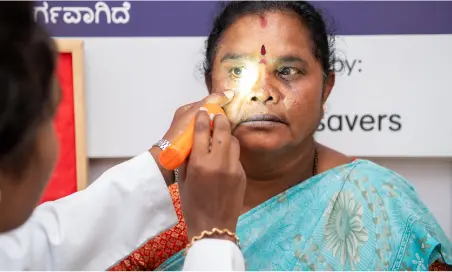

Glaucoma is a common name for a group of eye conditions that lead to gradual loss of vision. It is commonly caused due to intraocular pressure which leads to optic nerve damage. Vision loss in glaucoma typically occurs without any noticeable symptoms. A significant amount of peripheral (side) vision may diminish before individuals become aware of any vision issues.
There are different types of glaucoma, primarily there are two types that are most prevalent.
This is the most common type of glaucoma, affecting about 9 out of 10 people with glaucoma. It occurs when the pathway (angle of anterior chamber) responsible for maintaining the balance of fluid production and drainage inside the eye is open. This slow drainage increases pressure inside the eye, which can damage the optic nerve.
It occurs when the drainage pathway is narrow or blocked so the pressure rises quickly. This blockage can cause a rapid rise in eye pressure, leading to severe pain, redness, blurred vision, and nausea.
In the early stages there are usually no symptoms. People may experience gradual vision loss, usually starting with your peripheral vision.


Slow onset of vision impairment, peripheral vision loss, rainbow halos around lights.
Sudden and severe headache, eye pain, redness, nausea, vomiting, blurred vision.
Cloudiness of the cornea, excessive tearing, sensitivity to light (symptoms present at birth or early childhood).
Recognising the urgency of certain symptoms associated with glaucoma, it is crucial for timely intervention and preservation of vision. It's imperative to seek immediate medical attention if you experience any of the following.

Sudden Vision Changes including blurriness, blind spots Nausea, Vomiting with increased intraocular pressure.

Advancing age significantly increases the risk of glaucoma. It's crucial to undergo regular screenings to monitor eye health.

If you have conditions like diabetes and high blood pressure, that can affect eye health and increase risk of glaucoma.
Several options exist for managing glaucoma, with the choice of treatment depending on the type and severity of the condition. Additionally, doctors consider individual health factors when prescribing treatment.
The primary treatment for glaucoma often involves the use of eye drops. These medications work by either reducing the production of fluid within the eye or enhancing its drainage. Your doctor will prescribe the specific eye drops best suited to your condition.

Laser procedures are another option for managing glaucoma. They can be utilized to create new drainage pathways or widen existing ones, ultimately aiding in the reduction of eye pressure. Two common types of laser surgery for glaucoma include selective laser trabeculoplasty (SLT) and laser peripheral iridotomy (LPI).

When medications and laser therapies prove ineffective in controlling glaucoma, surgical intervention may become necessary. Several surgical procedures are available for this purpose.
